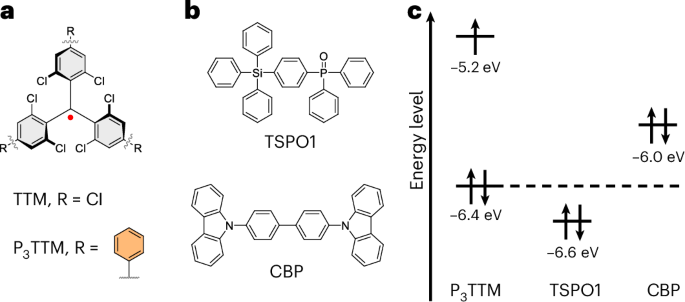I’m unaware of the federal government having previously charged anyone for fraud based on renting out a second home. Yet that’s what we have with the Letitia James mortgage fraud indictment. We don’t have all the facts available, but based on what is in the indictment, it’s clear why the career prosecutors in the Eastern District of Virginia refused to bring a case: James doesn’t appear to have made any misrepresentation in her mortgage because the mortgage does not directly prohibit rentals.
The indictment is pretty barebones. But here’s the heart of it:
6. The loan was originated by OVM Financial under a signed Second Home Rider, which required JAMES, as the sole borrower to occupy and use the property as her secondary residence, and prohibited its use as a timesharing or other shared ownership arrangement or agreement that requires her either to rent the property or give any other person any control over the occupancy or use of the property.
7. Despite these representations, the Peronne Property was not occupied or used by JAMES as a secondary residence and was instead used as a rental investment property, renting the property to a family of (3).
Unfortunately, the indictment does not indicate the date the property was rented out or the length of the rental duration. Both matter a lot. That’s because the Second Home Rider provides:
-
Occupancy. Borrower must occupy and use the Property as Borrower’s second home. Borrower will maintain exclusive control over the occupancy of the Property, including short-term rentals, and will not subject the Property to any timesharing or other shared ownership arrangement or to any rental pool or agreement that requires Borrower either to rent the Property or give a management firm or any other person or entity any control over the occupancy or use of the Property. Borrower will keep the Property available primarily as a residence for Borrower’s personal use and enjoyment for at least one year after the date of this Security Instrument, unless Lender otherwise agrees in writing, which consent will not be unreasonably withheld, or unless extenuating circumstances exist that are beyond Borrower’s control.
Three things matter here with the timing of the lease.
1. The Occupancy Covenant Does Not Prohibit Rentals Generally
The Second Home Rider does not prohibit renting out the property. Let me say that again. The Second Home Rider does not prohibit renting out the property.
The prohibition in the Second Home Rider is on devolving control over rental decisions to a third party, like a rental agent, not over renting itself. That’s why it says that the “Borrower will maintain exclusive control over the occupancy of the Property, including short-term rentals” (emphasis added) rather than “Borrower will maintain exclusive occupancy of the Property.” All the Rider is saying is that the Borrower has to be the one who decides on the occupant, rather than some third party.
You’d think a former insurance lawyer like Linsey Halligan (the interim US Attorney for the Eastern District of Virginia) would know how to read a contract provision carefully. But it’s pretty clear that this isn’t about law. It’s just a naked abuse of prosecutorial power.
Still, let me humor the argument that Halligan is a true believer in fiat justitia ruat caelum. Is there any plausible legal interpretation that supports the indictment? In short, no.
If the Rider wanted to prohibit rentals, it could have just said so directly: “The Borrower shall not rent out the property.” It didn’t. Instead, by placing a restriction on the use of third-party rental agents, the Rider implicitly authorizes rentals.
Perhaps the sentence that the “Borrower will keep the Property available primarily as a residence for Borrower’s personal use and enjoyment,” implicitly excludes rental arrangements, or at least those that last more than half of the year, but I’m not even sure that can be read as a prohibition on rental, so much as a prohibition on turning the property into something other than residential. It is, at best, an incredibly inartful way of drafting a rental limitation.
If the Rider does prohibit rentals for over half of the first year, then the date and length of the lease in the James case would be relevant, and that isn’t revealed in the indictment. But I’m not sure it really matters because James should will simply due to the ambiguity in the Rider. The Second Home Rider is an absolutely terrible bit of legal draftsmanship (as are many Fannie/Freddie uniform documents). The ambiguity means that James should be able to defeat the claim that she “knowingly” engaged in fraud.
Both charges brought against James, 18 USC 1014 and 18 USC 1344, require that her actions be done “knowingly,” and the Supreme Court has recently held, in the context of another provision, that “knowingly” is about the defendant’s subjective interpretation. The in pari material canon means that the interpretation on “knowingly” should apply to the provisions under which James was charged. It will be exceedingly difficult for the prosecution to show that James subjectively believed that she wasn’t allowed to rent out the property at the time she signed the mortgage given the ambiguity of the contract language.
The indictment attempts to show James’s subjective intent by noting that James subsequently listed the property as a rental property on her taxes, but that’s not evidence of her intent when she signed the mortgage. Instead, it’s just a statement reflecting the reality that the property was being used as a rental (which is allowed in any case). Moreover, it actually bolsters James’s case as it is consistent with her believing that she was allowed to rent out the property.
Likewise, the indictment notes that James’s application for homeowner’s insurance claimed the property as “owner-occupied non-seasonal use.” But no date is given for the insurance application, and the characterization of the property could well have been correct prior to the property being rented out (again the date of the rental matters).
Remember, the burden of proof is on the prosecution to show James’s subjective intent beyond a reasonable doubt. That cannot be done based on the evidence in the indictment. There isn’t sufficient evidence in the indictment to show that James knew that she was promising not to rent out the property and intended from the get-go to violate that promise.
2. The Occupancy Covenant Only Lasts One Year
Even if I’m wrong about the interpretation of the occupancy covenant, the operative restriction would come from the final sentence, which only attaches for one year. When did James rent out the property? We don’t know. That’s important information left out of the indictment.
3. Extenuating Circumstances: COVID
The Second Home Rider also has an exception for “extenuating circumstances exist that are beyond Borrower’s control.” The mortgage was from August 2020, in the middle of the COVID pandemic. That opens the door to an extenuating circumstances argument.
Putting this all together, this is an indictment that probably should not have been brought under the DOJ’s own guidelines: there isn’t sufficient evidence to even reach a conclusion of probable cause, much less that the evidence would be sufficient to obtain a guilty verdict.
.png)




